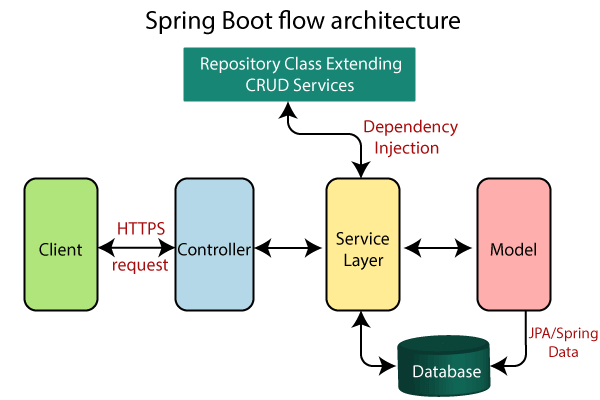In the vibrant and ever-evolving Java ecosystem, managing project dependencies, builds, and reporting can quickly become a complex and daunting task. As applications grow, incorporating frameworks like Spring Boot, persistence layers like Hibernate, and testing tools like JUnit and Mockito, the web of required libraries—and their specific versions—can lead to conflicts and inconsistencies. This is where Apache Maven steps in, not just as a tool, but as the foundational pillar of modern Java development, providing a standardized, convention-over-configuration approach to project management. Understanding Maven is no longer optional; it is a critical skill for any developer navigating the landscape of Java SE, Jakarta EE, and the broader JVM world.
Recent Maven news often highlights its central role in distributing software. Whether it’s a new connector for a database, the latest release of a popular framework, or a critical security patch, Maven Central acts as the universal distribution hub. This seamless integration allows developers to declare a dependency and let Maven handle the rest—downloading the required JARs and their transitive dependencies automatically. This article provides a comprehensive guide to mastering Maven, from its core concepts and practical implementations to advanced techniques and best practices essential for building robust, scalable, and maintainable Java applications in the era of Java 21 and beyond.
Understanding the Core: The Project Object Model (POM) and Dependency Management
At the heart of every Maven project lies a single, crucial file: pom.xml. The Project Object Model (POM) is an XML file that contains all the essential information about the project, its configuration details, and its dependencies. It is the blueprint that Maven uses to build your project.
GAV Coordinates: The Universal Addressing System
Every artifact (a JAR, WAR, or other build output) in the Maven ecosystem is uniquely identified by a set of coordinates, commonly known as GAV coordinates:
- GroupId: Usually identifies the organization or group that created the project. It typically follows Java’s package name conventions (e.g.,
org.springframework.boot). - ArtifactId: The name of the project itself (e.g.,
spring-boot-starter-web). - Version: The specific version of the artifact (e.g.,
3.2.0).
These three coordinates guarantee that every library can be precisely located and retrieved from a repository like Maven Central.
Here is a basic pom.xml for a simple Java application targeting Java 17. This file defines the project’s identity and sets up the necessary build properties.
<?xml version="1.0" encoding="UTF-8"?>
<project xmlns="http://maven.apache.org/POM/4.0.0"
xmlns:xsi="http://www.w3.org/2001/XMLSchema-instance"
xsi:schemaLocation="http://maven.apache.org/POM/4.0.0 http://maven.apache.org/xsd/maven-4.0.0.xsd">
<modelVersion>4.0.0</modelVersion>
<groupId>com.example</groupId>
<artifactId>simple-app</artifactId>
<version>1.0-SNAPSHOT</version>
<properties>
<maven.compiler.source>17</maven.compiler.source>
<maven.compiler.target>17</maven.compiler.target>
<project.build.sourceEncoding>UTF-8</project.build.sourceEncoding>
</properties>
<dependencies>
<!-- Dependencies will be added here -->
</dependencies>
</project>Declaring Dependencies and Scopes
The true power of Maven shines in its dependency management. To include a library, you simply declare it in the <dependencies> section. For instance, to add JUnit 5 for testing, you would add the following. This is a common sight in projects following the latest JUnit news and best practices.
<dependencies>
<!-- JUnit 5 Jupiter API for writing tests -->
<dependency>
<groupId>org.junit.jupiter</groupId>
<artifactId>junit-jupiter-api</artifactId>
<version>5.10.1</version>
<scope>test</scope>
</dependency>
<!-- JUnit 5 Jupiter Engine for running tests -->
<dependency>
<groupId>org.junit.jupiter</groupId>
<artifactId>junit-jupiter-engine</artifactId>
<version>5.10.1</version>
<scope>test</scope>
</dependency>
</dependencies>The <scope> element is crucial. It defines when a dependency is needed:
compile: (Default) The dependency is available in all classpaths of the project. It is packaged with the final artifact.test: The dependency is only available for compiling and running tests. It is not packaged. JUnit and Mockito are classic examples.provided: The dependency is expected to be provided by the JDK or a container at runtime (e.g., the Servlet API in a Jakarta EE application server).runtime: The dependency is not needed for compilation but is required at runtime (e.g., a JDBC driver).
Building and Packaging with Maven Lifecycles and Plugins

Maven standardizes the build process through a concept called the build lifecycle. A lifecycle is a sequence of phases, and each phase represents a stage in the build. The default lifecycle includes phases like:
validate: Validate the project is correct and all necessary information is available.compile: Compile the source code of the project.test: Run tests using a suitable unit testing framework.package: Take the compiled code and package it in its distributable format, such as a JAR or WAR.install: Install the package into the local repository for use as a dependency in other local projects.deploy: Copy the final package to a remote repository for sharing with other developers.
When you run a command like mvn clean install, you are telling Maven to execute the clean lifecycle (which removes previous build artifacts) and then execute all phases of the default lifecycle up to and including install.
Leveraging Plugins for Customization
While lifecycles define the “what,” Maven plugins do the actual work. Plugins are collections of goals, and goals are bound to specific lifecycle phases. For example, the maven-compiler-plugin‘s compile goal is bound to the compile phase. You can customize plugin behavior in the <build> section of your pom.xml.
For example, to ensure your project is built using the latest features from Java 21 news, you would configure the compiler plugin explicitly. This is a best practice over relying on the default <properties>.
<build>
<plugins>
<plugin>
<groupId>org.apache.maven.plugins</groupId>
<artifactId>maven-compiler-plugin</artifactId>
<version>3.11.0</version>
<configuration>
<source>21</source>
<target>21</target>
<compilerArgs>
<!-- Enable preview features for projects exploring Project Loom or Panama -->
<arg>--enable-preview</arg>
</compilerArgs>
</configuration>
</plugin>
<plugin>
<groupId>org.apache.maven.plugins</groupId>
<artifactId>maven-surefire-plugin</artifactId>
<version>3.2.2</version>
</plugin>
</plugins>
</build>In the world of Spring Boot news, the spring-boot-maven-plugin is indispensable. It packages the application into a single executable “fat JAR” that includes an embedded server and all dependencies, simplifying deployment immensely.
Advanced Techniques for Complex and Multi-Module Projects
As projects grow, managing dependencies across multiple modules can become challenging. Maven provides powerful features to handle this complexity gracefully.
Parent POMs and Dependency Management
In a multi-module project, you can create a parent POM that centralizes configuration. Sub-modules inherit this configuration, ensuring consistency. The <dependencyManagement> section in a parent POM is particularly useful. It allows you to define the versions of dependencies for all child modules without forcing them to include those dependencies.
This prevents version conflicts and makes updates much easier. Child modules can then declare a dependency without specifying a version, and Maven will automatically use the one defined in the parent’s <dependencyManagement> block.
Bill of Materials (BOM)
A Bill of Materials (BOM) is a special type of POM that centralizes dependency versions for a large library or framework. Instead of inheriting from a parent POM, you can import a BOM. This is the approach recommended by Spring Boot and many Jakarta EE specifications.

Importing the Spring Boot BOM allows you to manage versions for a wide array of libraries (Spring Data, Spring Security, Jackson, etc.) with a single entry. This greatly simplifies your POM and ensures compatibility across the entire stack.
<dependencyManagement>
<dependencies>
<!-- Import the Spring Boot Bill of Materials (BOM) -->
<dependency>
<groupId>org.springframework.boot</groupId>
<artifactId>spring-boot-dependencies</artifactId>
<version>3.2.0</version>
<type>pom</type>
<scope>import</scope>
</dependency>
</dependencies>
</dependencyManagement>
<dependencies>
<!-- Version is now managed by the BOM -->
<dependency>
<groupId>org.springframework.boot</groupId>
<artifactId>spring-boot-starter-web</artifactId>
</dependency>
<!-- You can also add other dependencies like Hibernate -->
<dependency>
<groupId>org.hibernate.orm</groupId>
<artifactId>hibernate-core</artifactId>
<!-- Version for Hibernate is also managed by the Spring Boot BOM -->
</dependency>
</dependencies>Maven Profiles for Environment-Specific Builds
Maven profiles allow you to customize a build for different environments (e.g., development, testing, production). A profile can modify dependencies, plugin configurations, or properties. It can be activated by a command-line flag, an environment variable, or the absence/presence of a file.
This is extremely useful for tasks like connecting to a different database in production or enabling additional code analysis plugins only during a CI build.
Best Practices, Optimization, and Navigating the Java Ecosystem
Writing a functional pom.xml is one thing; maintaining a healthy, secure, and efficient build system is another. Adhering to best practices is key to long-term project success.
Best Practices for a Robust Build

- Use the Maven Wrapper: Include the Maven Wrapper (
mvnw) in your project. This ensures that anyone building the project uses the same Maven version, leading to reproducible builds and avoiding environment-specific issues. - Resolve Dependency Conflicts Proactively: “Dependency hell,” where different libraries require conflicting versions of a third library, is a common pitfall. Use the
mvn dependency:treecommand to visualize your dependency graph. Use the<exclusions>tag or the<dependencyManagement>section to resolve conflicts explicitly. - Keep Dependencies Updated: Regularly check for updated versions of your dependencies. This is not just about getting new features but is also critical for security. Keeping an eye on Java security news and using tools like the OWASP Dependency-Check plugin can help automate this process.
- Enforce Build Rules: Use the
maven-enforcer-pluginto enforce rules like requiring a specific Java or Maven version, or to ban certain problematic dependencies.
Performance and the Modern JVM
As applications become more complex, build times can increase. To improve Java performance news for your builds, you can run Maven in parallel using the -T flag (e.g., mvn -T 4 clean install). This is especially effective in multi-module projects.
Furthermore, Maven is fully equipped to build applications that leverage modern JVM features. Whether you’re experimenting with virtual threads from Project Loom news, using the Foreign Function & Memory API from Project Panama news, or building reactive systems, Maven seamlessly manages the necessary dependencies and compiler flags, ensuring your project stays on the cutting edge of the Java ecosystem news.
While Maven is the dominant build tool, it’s worth noting the existence of alternatives like Gradle. Recent Gradle news often points to its use of a Groovy or Kotlin DSL for build scripts, which some developers find more flexible than Maven’s XML. However, Maven’s strict conventions and vast ecosystem make it a reliable and powerful choice for the majority of Java projects.
Conclusion: The Enduring Relevance of Maven
Apache Maven is more than just a build tool; it is the backbone of the modern Java development workflow. It provides a standardized, powerful, and extensible platform for managing dependencies, building projects, and ensuring consistency across teams and environments. From a simple command-line application to a complex microservices architecture built with Spring Boot and deployed on the cloud, Maven provides the structure and automation needed to manage complexity effectively.
By mastering the concepts of the POM, GAV coordinates, build lifecycles, and advanced features like BOMs and profiles, developers can unlock significant productivity gains. As the Java platform continues to evolve with exciting developments from OpenJDK distributions like Amazon Corretto and Adoptium, and new features in Java 21, Maven remains the steadfast companion that brings order to the dynamic and powerful world of Java. The next step in your journey could be exploring custom plugin development, integrating with CI/CD pipelines, or setting up a private repository manager to further streamline your development process.

